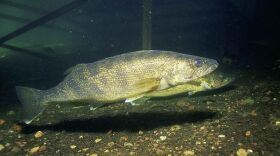Forests in the Northwoods and Upper Peninsula may look different in the next century thanks to a warming climate. Anew report from the U.S. Forest Service predicts fewer of some types of conifers and more hardwoods in northern forests.
A new analysis of climate data predicts temperatures will gradually rise between two and nine degrees on 16 million acres of forest in northern Wisconsin and the Western U.P. And according to scientists at the U.S. Forest Service’s Northern Research Station, that could mean fewer boreal species like black spruce, balsam fir, and paper birch.
“There’s an expectation that the way climate is expected to change, these species are going to be less well suited. As it gets warmer, as we potentially have more wind disturbances, or forest pest and disease issues.”
That’s Maria Janowiak, climate change scientist with the U.S Forest Service. She says while cold-loving species could decline, hardwoods with a more southern range like black cherry and red maple...may become more dominant.
And temperature isn’t the only factor. The report predicts changes in precipitation patterns, with lower winter snow totals, but more storm events year-round. Janowiak says even if rainfall amounts stay the same, evaporation is likely to increase.
“So even thought the precipitation amount might not be projected to change a lot, if we have warmer temperatures that’s going to result in a lot greater water stress on plants, and it’s gonna make the air feel drier, even if the precipitation isn’t necessarily changing.”
The report doesn’t make policy recommendations, but Janowiak says its goal is to provide scientific data that forest managers can use.







